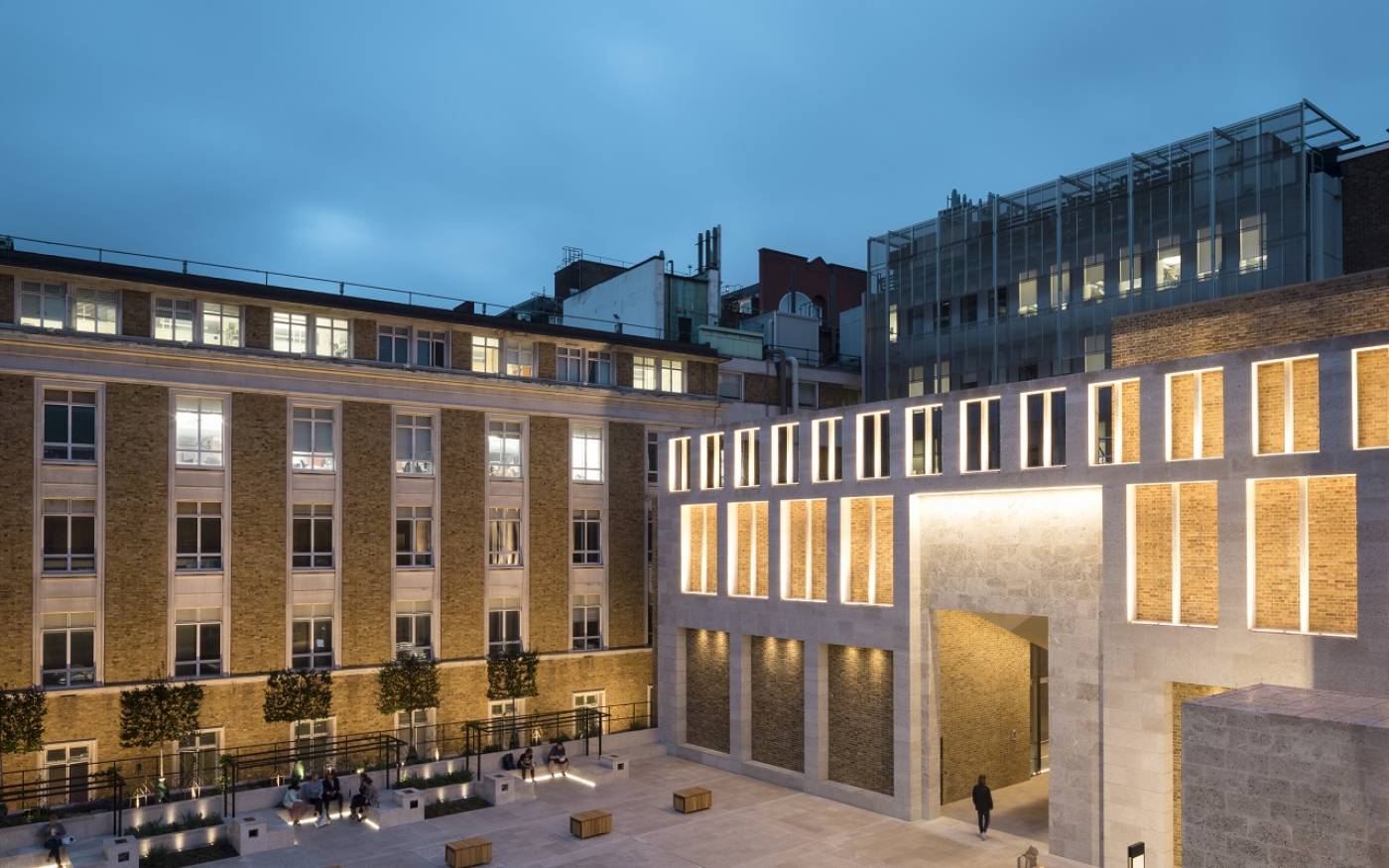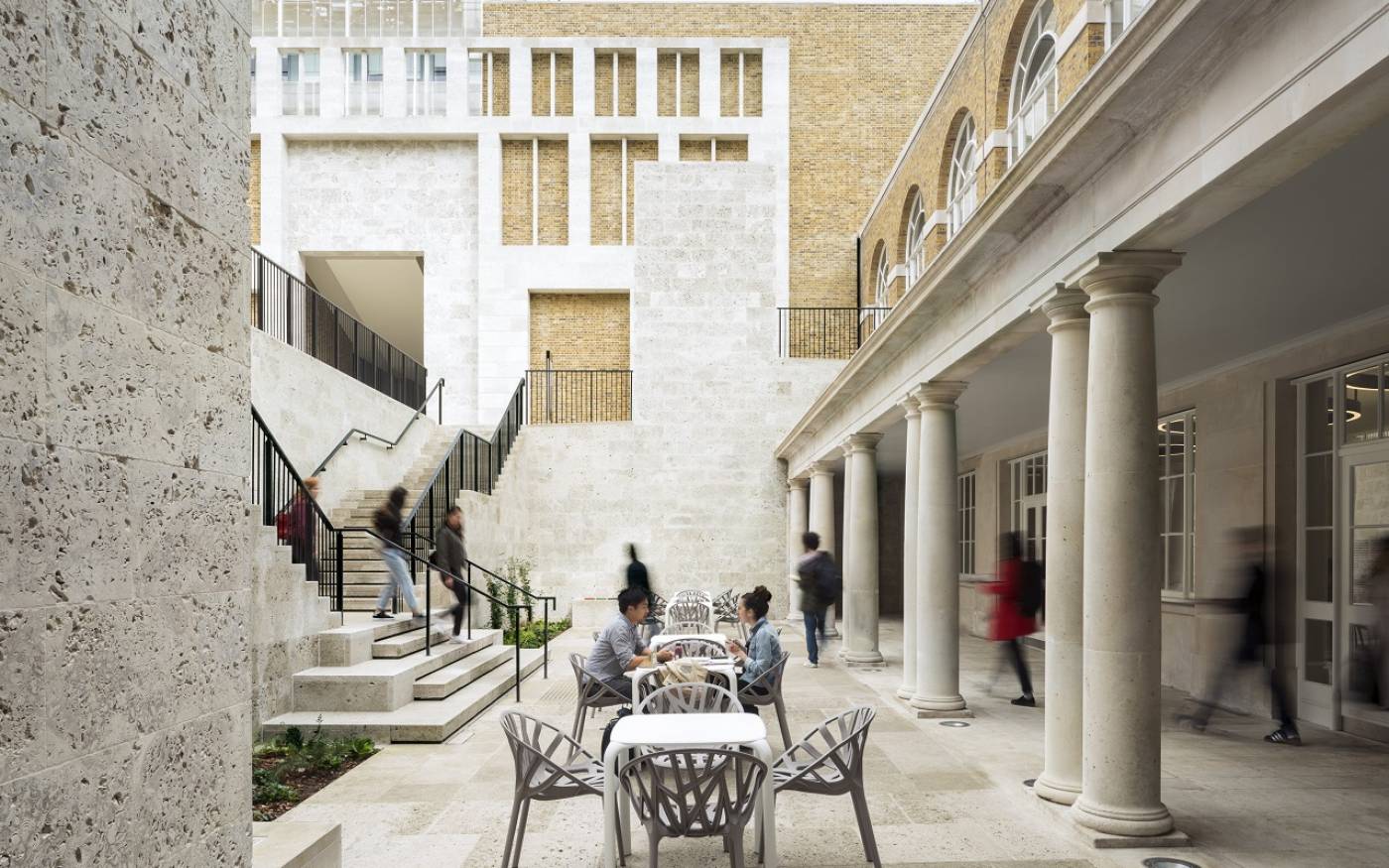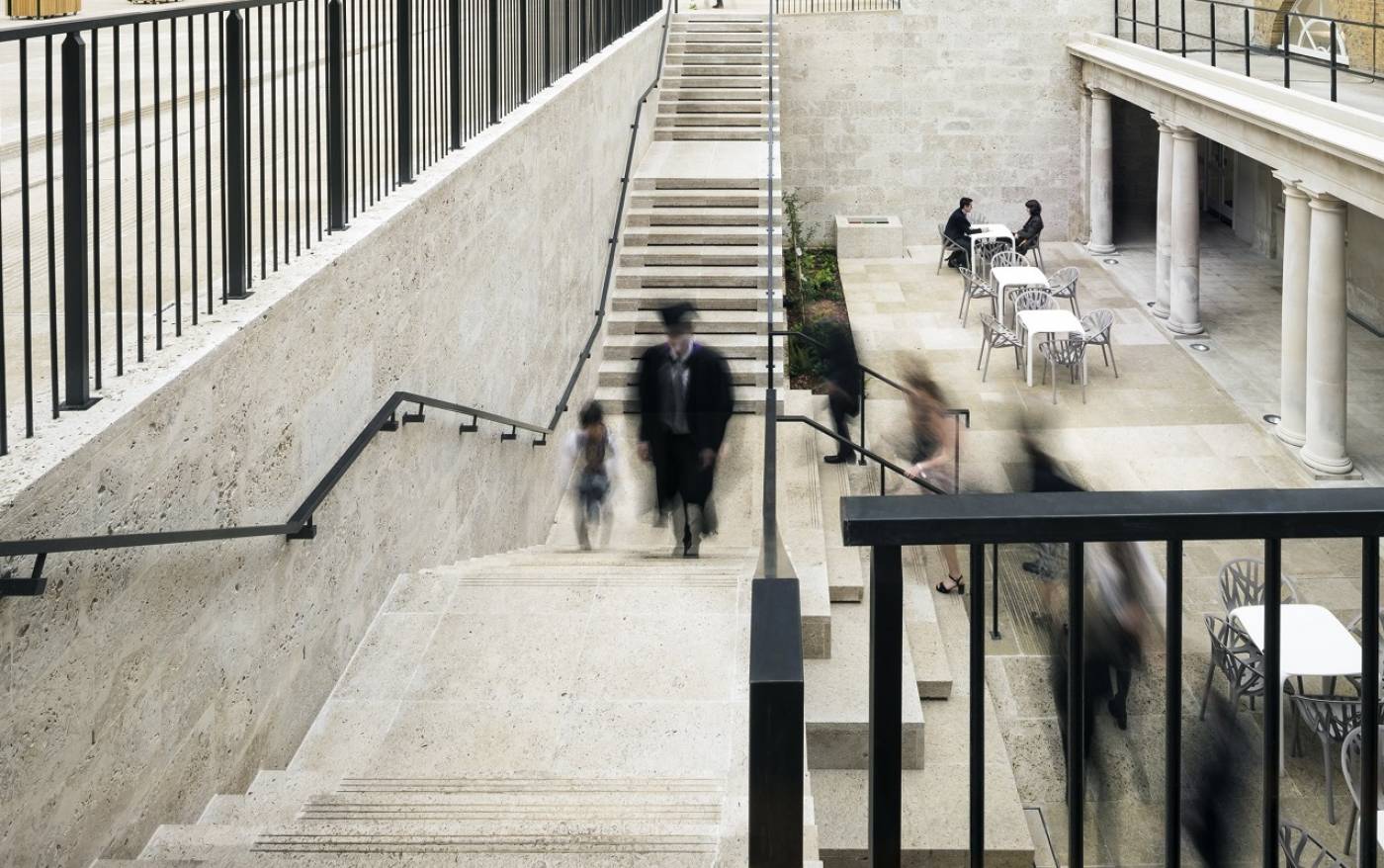Located at the heart of the UCL Bloomsbury Campus, this project brings together works to create a new public open space on the site of the former Physics Service Yard.




Included in this project was the refurbishment and extention of the main refectory in the undercroft of the Grade 1 listed Wilkins Building.
Concealing a heavily used service area, the new upper terrace area is accessed via a new lift or dual stairway and provides much needed space for relaxation and events. The creation of this high quality outdoor space also helps to support the University’s wellbeing strategy, ‘Wellbeing@UCL’. At the lower level, an additional seating area leads through a colonnade to the Lower Refectory.
Sustainability has been a key consideration in the planning and development of the project and the refectory is on track to achieve a minimum environmental rating of BREEAM ‘Very Good’. This will help to reduce UCL’s impact and operational costs, not least due to much improved energy performance and monitoring.
Sustainability features
- Major improvements to building fabric and the efficiency of heating and cooling systems will help to reduce energy consumption and occupant comfort.
- Indoor air quality has also been optimised through careful selection of paints, varnishes, timber based products and furniture
- Upgrades to sanitary facilities will result in lower potable water use, reducing the impact on UCL’s drainage infrastructure
- The constrained and sensitive nature of the site meant that construction impacts had to carefully managed, not least in relation to noise and vibration. In addition, careful monitoring of energy use (and associated CO2 emissions), local pollution and water use has helped to minimise environmental impacts during construction
- Improved energy management capabilities will allow UCL to monitor and manage consumption in much greater detail, highlighting energy-hungry areas and activities, as well as opportunities for ongoing efficiencies.
- The selection of durable, high quality materials will help to maximise life cycle value and performance whilst minimising resource use associated with maintenance and repairs.
 Close
Close

